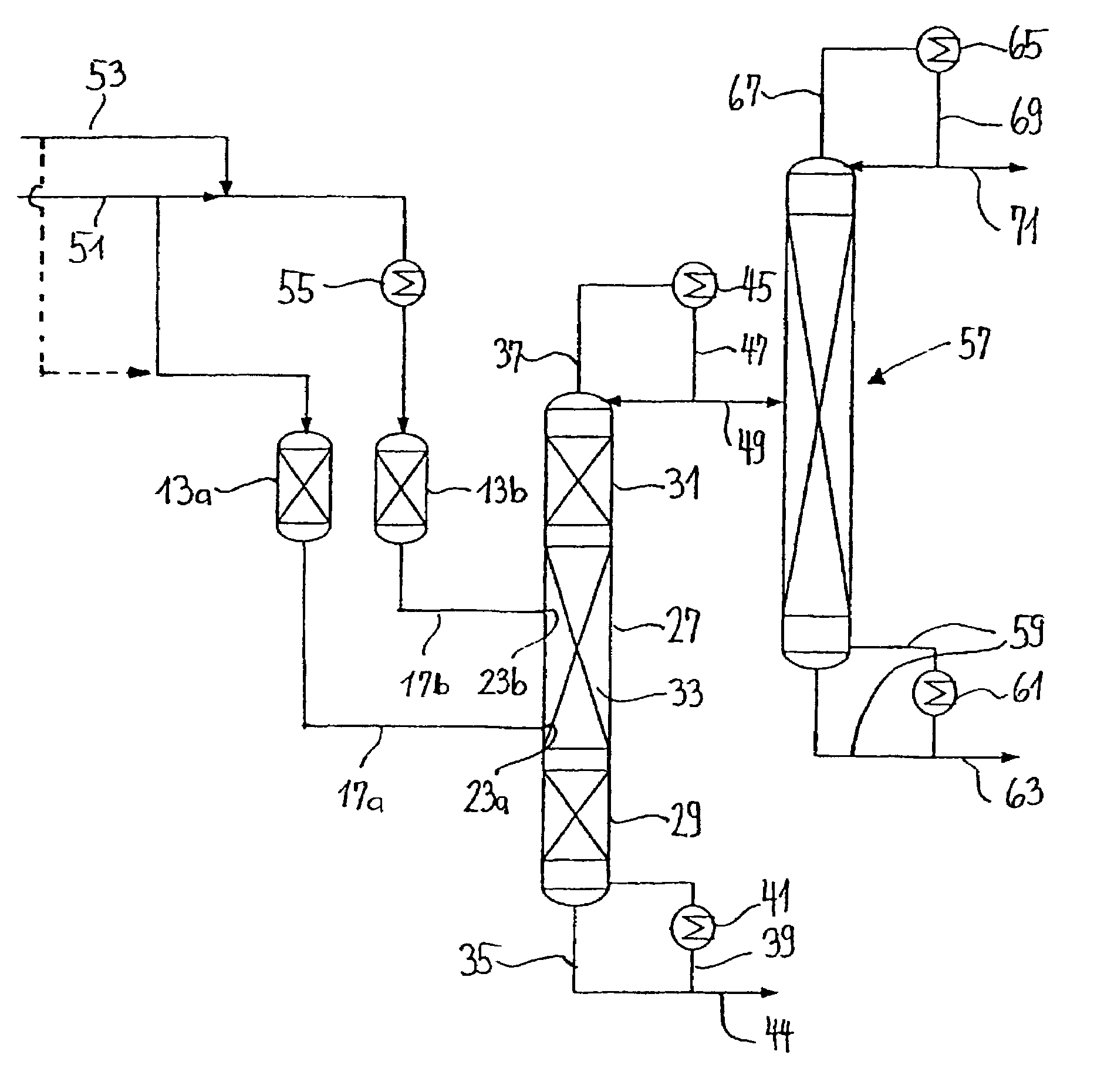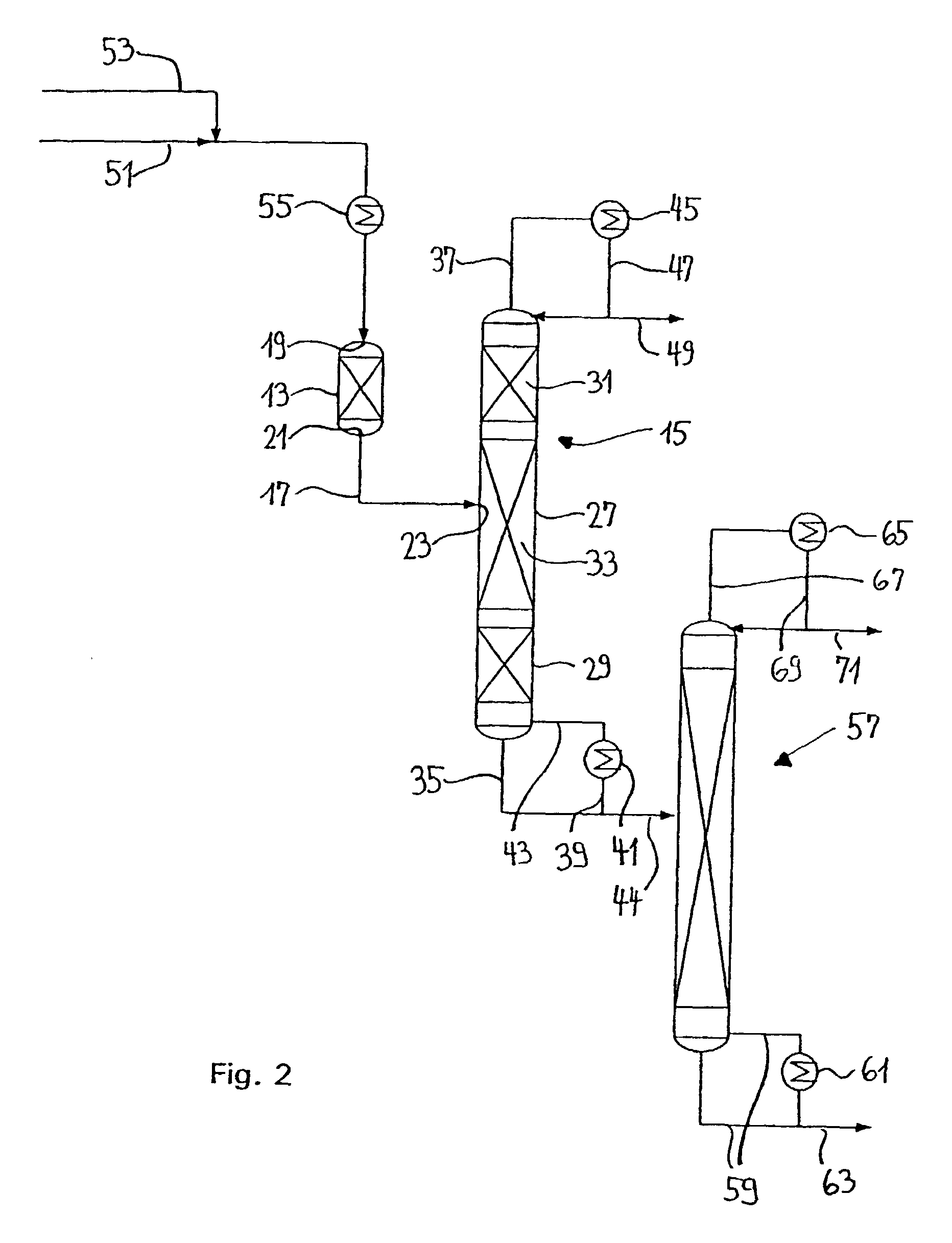Process and device for hydrolytically obtaining a carboxylic acid alcohol from the corresponding carboxylate
a technology of carboxylic acid alcohol and hydrolysis process, which is applied in the direction of solvent extraction, sustainable manufacturing/processing, separation processes, etc., can solve the problems of low yield of reaction products, inability to profitably sell, and inability to economically interest products such as methyl aceta
- Summary
- Abstract
- Description
- Claims
- Application Information
AI Technical Summary
Benefits of technology
Problems solved by technology
Method used
Image
Examples
example 3
[0053]Simulation of the hydrolysis and separation reaction by means of the simulation program PRO / II of the company SIMSCI (Simulation Sciences Inc.) with the aim of obtaining pure acetic acid from a methyl acetate flow utilising a pre-reactor / reactive distillation column combination according to the invention:
[0054]
Reactive Distillation Column:rectification zone:10 theoretical stages (TS)reaction zone:25 TSstripping zone:15 TSFor the methyl acetate flow to be hydrolysed,the following composition was assumed (in percent by weight):acetaldehyde:0.9%methyl acetate:93.1%methanol:2.1%water:3.9%Feed Flows (in kg / h):feed flow:6500 kg / h (of acetaldehyde,MeAc, MeON and H2O)water:7100 kg / hProduct Flows (in kg / h):head flow:10,000 kg / hbase flow:3600 kg / hExperimental Conditions:head pressure: 1.5 barfeed point:35 TSreflux ratio:10heat exchanger temperature:120° C.Result:methyl acetate conversion:57.6%after prereactor:overall:73.3%base flow composition of the reactive distilla-tion column in per...
PUM
| Property | Measurement | Unit |
|---|---|---|
| temperature | aaaaa | aaaaa |
| temperature | aaaaa | aaaaa |
| temperature | aaaaa | aaaaa |
Abstract
Description
Claims
Application Information
 Login to View More
Login to View More - R&D
- Intellectual Property
- Life Sciences
- Materials
- Tech Scout
- Unparalleled Data Quality
- Higher Quality Content
- 60% Fewer Hallucinations
Browse by: Latest US Patents, China's latest patents, Technical Efficacy Thesaurus, Application Domain, Technology Topic, Popular Technical Reports.
© 2025 PatSnap. All rights reserved.Legal|Privacy policy|Modern Slavery Act Transparency Statement|Sitemap|About US| Contact US: help@patsnap.com



